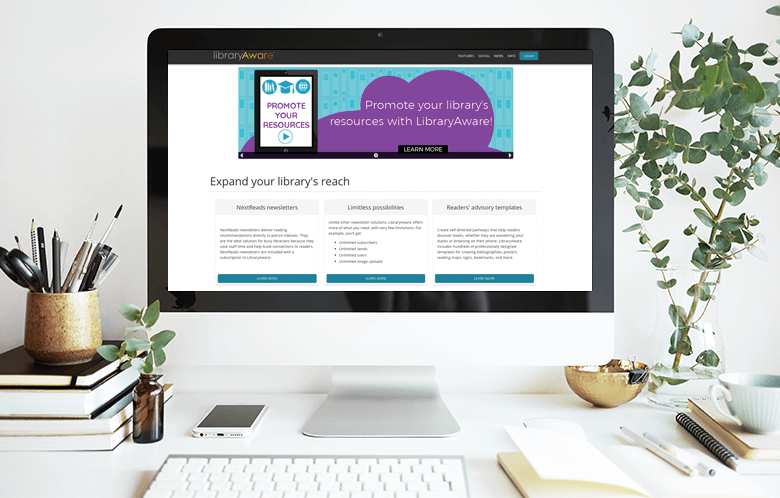Would you believe me if I told you that the first email was sent in 1971? The sender, Ray Tomlinson, can’t quite remember but thinks the message was likely “Test123” or “QWERTYUIOP.” He sent it to himself via the ARPANET, the first iteration of the internet, and had no idea he was making history. How about the fact that the first email newsletter was sent on December 22, 1977? Naturally, it was a computer technology newsletter. It was also sent over the ARPANET and ran, astonishingly, until 2001.
Fast forward to the 90s. With this fast-paced decade came some major changes: the World Wide Web, Hotmail, AOL (I’ll remember that dial-up sound for the rest of my life). Time passed, and along came 2020. We all know how we relied on email newsletters during the pandemic. In our desperate need to continue to operate and find a new normal, we turned to digital spaces. Doors closed, events went virtual, and email inboxes became the most reliable form of communication.
Email is 52 years old as of this writing and is still going strong. How many other digital marketing channels can say the same? Certainly not fax machines.
Suffice it to say, email newsletters became a lifeline, and we all learned how to use them. Some of us learned how to use them really well. It’s now 2023, and we can look at these stats: There are 4 BILLION daily email users, subscriber segmentation is the single most effective email marketing strategy, and 77 percent of marketers have seen an increase in email engagement over the last 12 months.
The objections to writing email newsletters today remain stubbornly the same as ever:
“We don’t want to annoy people.”
“Isn’t social media the way it is now?”
“My subscriber list is too small for it to matter.”
After five decades, it’s time to set aside these concerns. Email newsletters aren’t going anywhere, period. Now, we need to talk about the real challenge. It’s not “Should we write a newsletter?” The right question is, “How do we write the best newsletter possible?”
Readers know the difference, and the pandemic-era newsletter tidal wave had a lot to do with that. Subscribers have expectations: to get what they signed up for, to be assisted/educated/entertained, to be able to read newsletters easily on mobile devices, to be given a way to unsubscribe without hassle, and to feel cared for. A good email marketing strategy must keep all these things in mind — but that’s not all.
The best newsletters focus on content. They tell a story. They solve problems. Think about the reasons you sign up for newsletters. Say you became obsessed with baking sourdough bread sometime in the past three years (who didn’t?). Would you rather sign up for a general cooking newsletter, or a baking newsletter with the same obsession for fermentation? That’s the difference. Caring organizations, like libraries, understand their audiences and provide niche information that will appeal directly to them.
Library marketers rejoice! This guide is just for you. Download Library Newsletters: Best Practices to help you write email newsletters for your library. Written by library marketers, for library marketers.
Libraries are well-placed to provide valuable email newsletters to their communities. Who could know their community better? There’s so much to promote! Programs tailored to match the cultures and interests of their area. Collections that do the same. Resources built to meet basic needs and outreach that makes their lives better.
It’s no wonder that libraries generally see higher open rates than the majority of non-profits. Patrons know the information is something they’ll be interested in. Here at NoveList, our LibraryAware customers see average open rates of around 43%. Compare this to the average non-profit open rate of 26.6%.
Libraries are well-placed to provide valuable email newsletters to their communities.
Libraries are well-placed to provide valuable email newsletters to their communities.
I can’t find stats on it, but it’s a safe bet that many library marketers came to their roles unexpectedly — or it’s just part of their other job duties. The joke about the high number of library staff having the word “and” in their job titles is only funny because it’s true. How many library staff had marketing experience before being asked to write email newsletters? Probably a few hands raised. I’d believe most had to learn it for themselves.
NoveList knows this, and we care about the situation. Marketing is not a four-letter word. It’s a good thing, and we’ve got resources to help. Training is available, including several courses about marketing (and, insider info, a whole course on email marketing for libraries is on its way). We’ve got amazing customer support. And, of course, there’s LibraryAware, the promotional platform designed with libraries in mind.
If you’ve been thinking about writing newsletters for your library — Bravo! You should! Start with a chat with our sales reps and a free demo. Email newsletters are here to stay, and libraries are worth the time spent telling their story.



